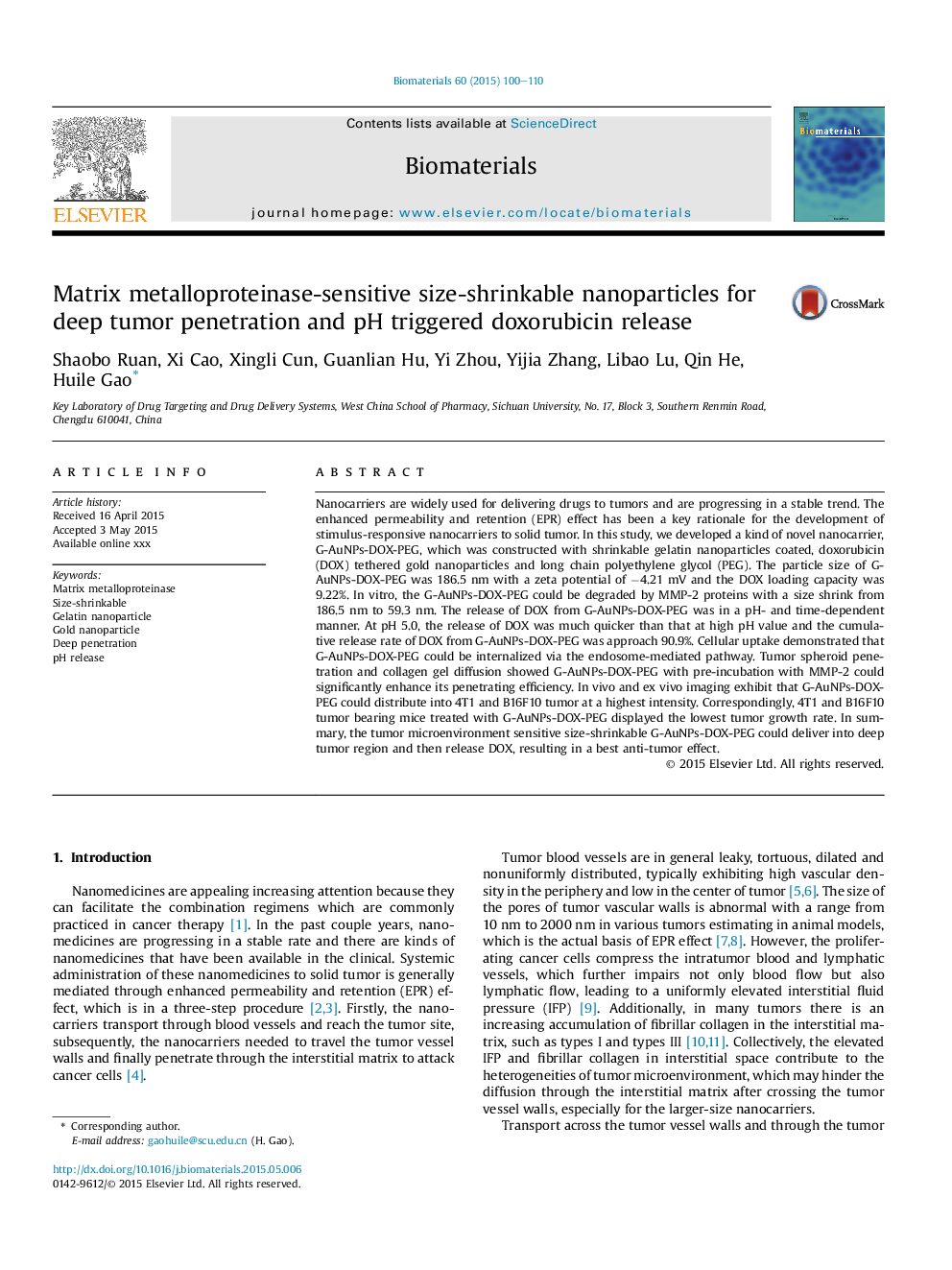| Article ID | Journal | Published Year | Pages | File Type |
|---|---|---|---|---|
| 6485652 | Biomaterials | 2015 | 11 Pages |
Abstract
Nanocarriers are widely used for delivering drugs to tumors and are progressing in a stable trend. The enhanced permeability and retention (EPR) effect has been a key rationale for the development of stimulus-responsive nanocarriers to solid tumor. In this study, we developed a kind of novel nanocarrier, G-AuNPs-DOX-PEG, which was constructed with shrinkable gelatin nanoparticles coated, doxorubicin (DOX) tethered gold nanoparticles and long chain polyethylene glycol (PEG). The particle size of G-AuNPs-DOX-PEG was 186.5 nm with a zeta potential of â4.21 mV and the DOX loading capacity was 9.22%. In vitro, the G-AuNPs-DOX-PEG could be degraded by MMP-2 proteins with a size shrink from 186.5 nm to 59.3 nm. The release of DOX from G-AuNPs-DOX-PEG was in a pH- and time-dependent manner. At pH 5.0, the release of DOX was much quicker than that at high pH value and the cumulative release rate of DOX from G-AuNPs-DOX-PEG was approach 90.9%. Cellular uptake demonstrated that G-AuNPs-DOX-PEG could be internalized via the endosome-mediated pathway. Tumor spheroid penetration and collagen gel diffusion showed G-AuNPs-DOX-PEG with pre-incubation with MMP-2 could significantly enhance its penetrating efficiency. In vivo and ex vivo imaging exhibit that G-AuNPs-DOX-PEG could distribute into 4T1 and B16F10 tumor at a highest intensity. Correspondingly, 4T1 and B16F10 tumor bearing mice treated with G-AuNPs-DOX-PEG displayed the lowest tumor growth rate. In summary, the tumor microenvironment sensitive size-shrinkable G-AuNPs-DOX-PEG could deliver into deep tumor region and then release DOX, resulting in a best anti-tumor effect.
Related Topics
Physical Sciences and Engineering
Chemical Engineering
Bioengineering
Authors
Shaobo Ruan, Xi Cao, Xingli Cun, Guanlian Hu, Yi Zhou, Yijia Zhang, Libao Lu, Qin He, Huile Gao,
